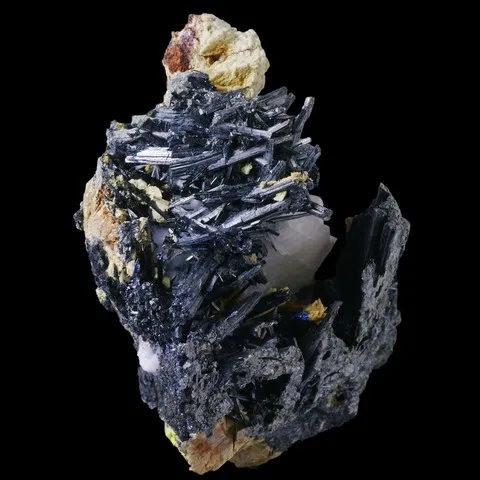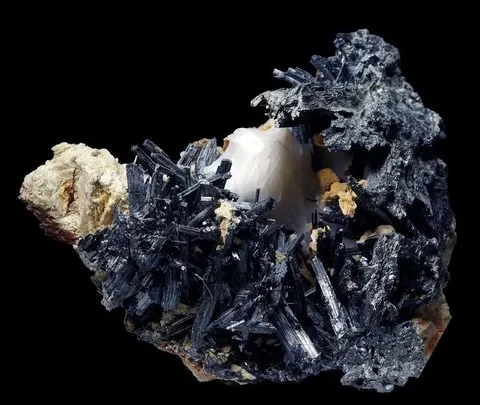ZINKENITE
Class : Sulfides and sulfosalts
Subclass : Sulfosalts
Crystal system : Hexagonal
Chemistry : Pb9Sb22S42
Rarity : Uncommon
Zinkenite (or zinckenite) is one of the most common prismatic lead sulfosalts (lead sulfoantimoniides). It owes its name to the German geologist and mineralogist J. K. L. Zinken. It is found, like boulangerite, semseyite, jamesonite or plagionite, in medium-temperature lead-antimony hydrothermal veins. It appears in fibrous aggregates, more rarely in distinct striated crystals parallel to the elongation. Its color is steel gray, becoming iridescent by tarnishing, its luster is metallic. This mineral is easily altered at the outcrop, giving mixtures of antimony oxides and lead oxides ; it is very difficult to distinguish from other fibrous sulfosalts by simple means. It can possibly be used as an ore of antimony, but of mediocre quality.
Zinkenite in the World
Twinning
No known twin for this mineral species.
Fakes and treatments
Most specimens from St-Pons (Alpes-de-Haute-Provence) are cleared with acid.
Hardness : 3 to 3.5
Density : 5.3
Fracture : Irregular
Streak : Gray
TP : Opaque
RI : Not measurable
Birefringence : Not measurable
Optical character : None
Pleochroism : None
Fluorescence : None
Solubility : Hydrochloric acid
Magnetism : None
Radioactivity : None


